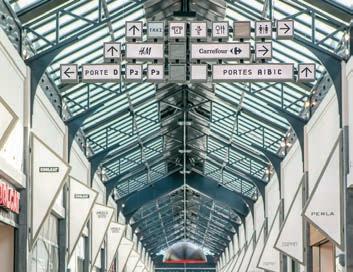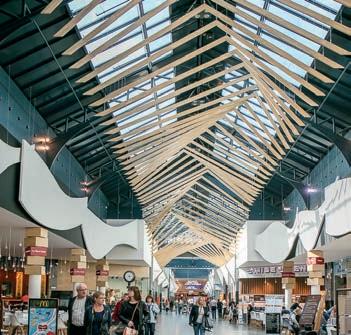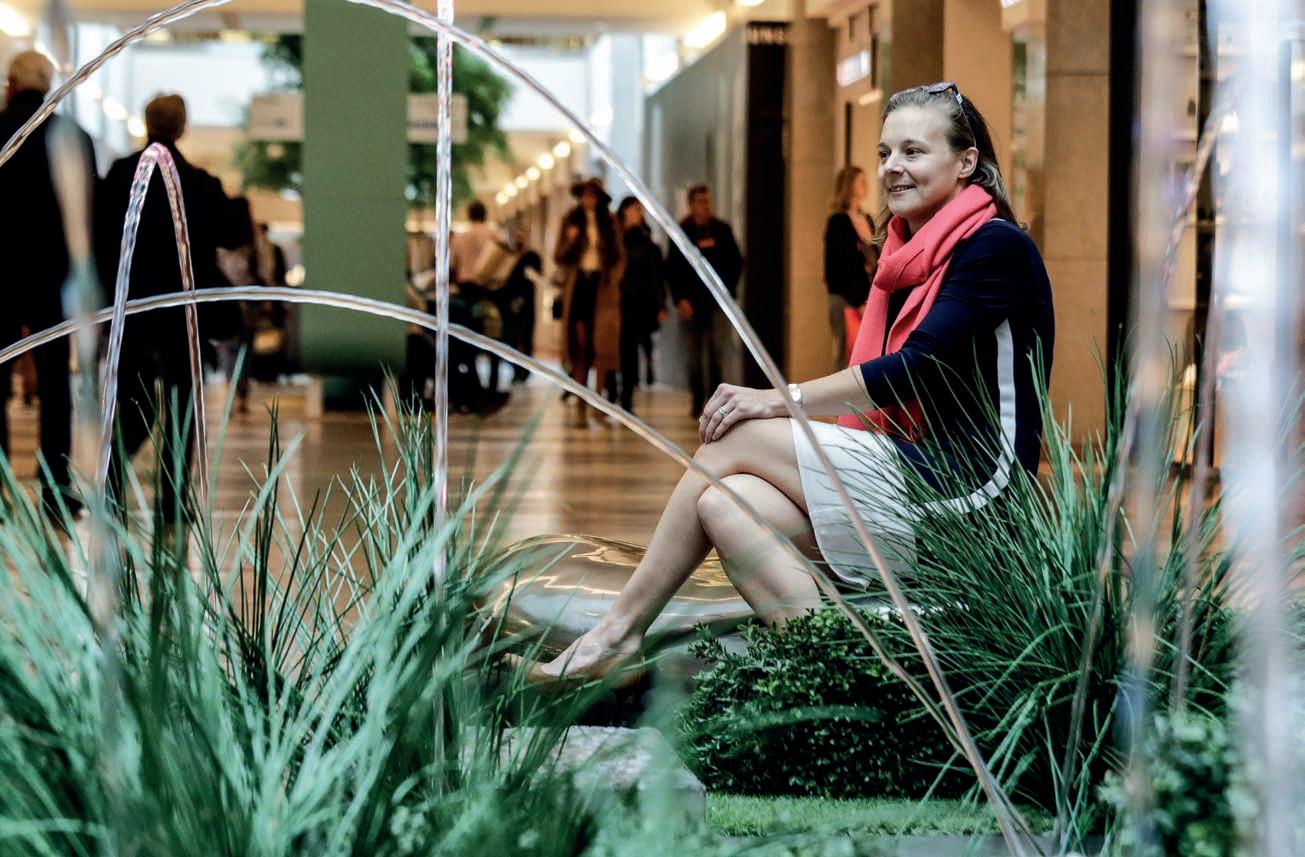
3 minute read
Project management : unburden your client

Advertisement

The six stages of project management
“Project management aims to ensure that work is done as e iciently and e ectively as possible, to disencumber the clients, and to improve the customer experience,” says Stefanie Van den Rul. “Nevertheless, clients are free to pick and choose specific services. We don’t insist on taking over all steps, nor do clients have to go along with all of our proposals.”
Moving an elevator a couple of feet to the left or right in a shop may seem like a small detail on paper, but it can have a severe impact on the retailer. Because, for example, the ceiling will need to be reconstructed. CEUSTERS’ project managers unburden clients on these relatively small-scale operations, but also on much bigger projects.
“We do something di erent every day,” says Stefanie Van den Rul, Head of property management at CEUSTERS. “Project management is a branch within the property management department in addition to the financial, administrative, and legal management branches. This branch is increasingly growing into a separate business unit, because we notice customers require additional services. More specifically, they need to keep their premises sustainable by doing in-depth renovation works or smaller alterations. We aim to support our clients in extending their buildings’ lifespan, while also engaging in more conventional property management.
1 Project analysis. What do we have to accomplish? We list all possible suppliers and draw up specifications. 2 Requesting permits, in case this is required. For example when we alter façades or building structures in cooperation with the architect. Sometimes, this task is the responsibility of the third party that executes the construction works, since we are not a contractor. 3 After the pre-analysis, we prepare the actual requests for quotations and the quotations themselves. Afterwards, it’s up the client to select a contractor. We’re in constant communication and obviously don’t impose our choice. 4 The award stage: in this stage we conclude agreements with the selected suppliers. 5 Following up the work from A to Z. This even entails invoicing, which we first inspect before sending it to the client. He doesn’t pay until we give the go-ahead. 6 The last stage is delivery. We aim to completely unburden the client and strive for top-notch customer satisfaction. Especially in retail parks, this also entails an improved customer experience and long-term added value.

Stefanie Van den Rul, Head of property management
Coordination and control A typical example of project management is the fitting out of a new store for e.g. a clothing brand in a retail park or shopping center. “Usually, the previous tenant has emptied the premises completely, leaving them in shellstate, aside from the occasional sprinkler system. A contract is then concluded between the tenant and his contractor, with CEUSTERS taking care of the assessment, coordination, and monitoring of the studies, plans and works related to the fitting out of the store, until the actual opening. These projects need to adhere to legal standards and comply with the specifications agreed between tenant and contractor.”
“It’s not strictly necessary, but it’s obviously a plus when we know the building that’s undergoing the work. That means we know
about its business, facilities, and finances. As managers, we know the complete history of the building, how it’s put together, the as-built plans, etc. The party paying us for that sort of coordination eort is the tenant—either a lump-sum payment or per square metre.”
New technology Project management is increasingly popular because owners and tenants are having to comply with ever more legal requirements. “In any event, you need a professional who’s up-to-date on the newest tech.”
However, there can be more to project management than just coordination. “There’s an example from the retail industry: the extension of the Les Grands Prés shopping mall in Mons with simultaneous refurbishment of the food court. We struck an agreement with the owner-manager and took complete charge of the project. Our aim was to completely unburden him.”
“These past few years, we’ve built up a great deal of expertise in these types of projects, thanks to our frequent collaborations with engineering agencies, architects, etc., which also helps us to keep costs in check.” “The increase in the number of projects is also related to the arrival of new technologies, such as the installation of all sorts of sensors and measuring equipment. In the long run, these investments lower the costs. Think about measuring the utilities, for one, which provides us with a better view of usage and lets us solve problems proactively— even from a distance. Occasionally, CEUSTERS also manages smaller projects, such as LED relamping. There is, of course, one constant to the narrative: our tailor-made approach.”




